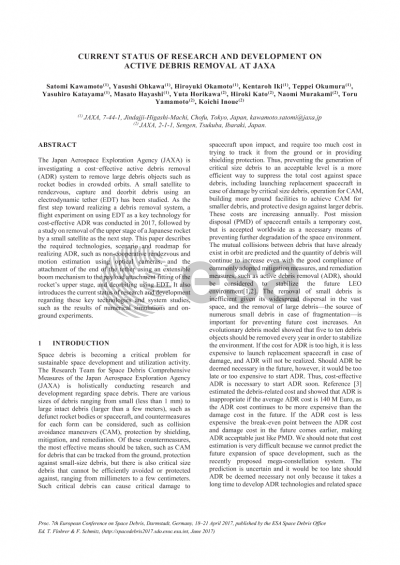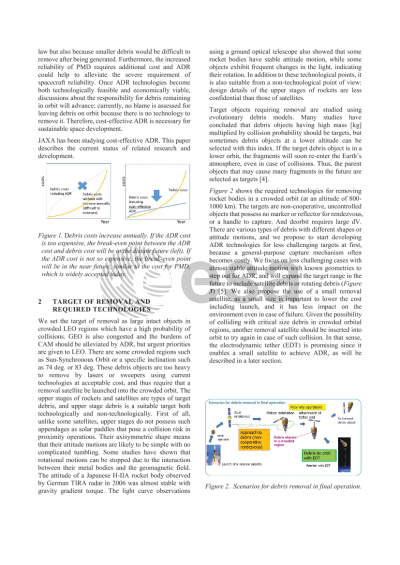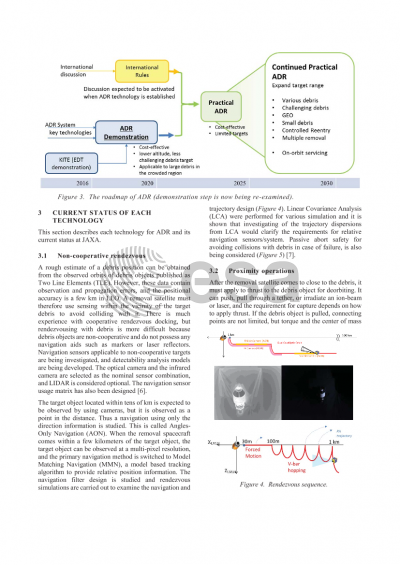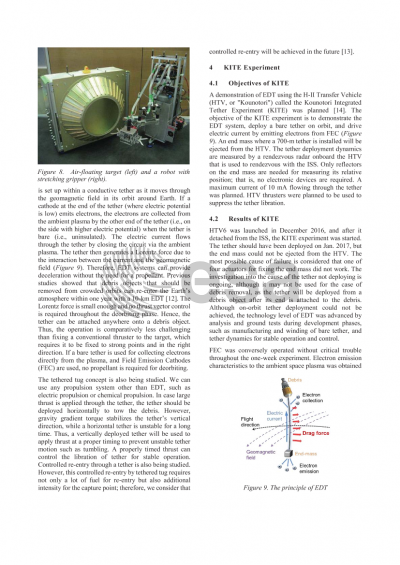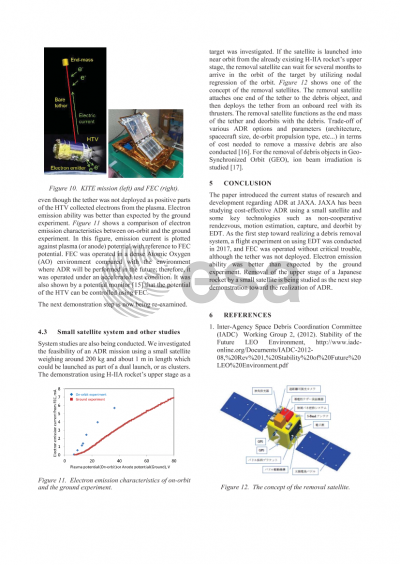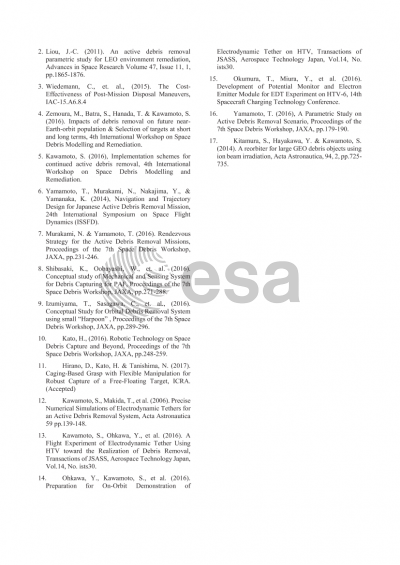Document details

Abstract
The Japan Aerospace Exploration Agency (JAXA) is investigating the cost effective active debris removal system to remove large debris objects such as rocket bodies in crowded orbits. We propose a small satellite to rendezvous, capture and deorbit debris using electrodynamic tether, in order to achieve ADR in a cost effective manner. As the first step toward the realization of a debris removal system, a flight experiment of EDT using the H-II Transfer Vehicle (HTV, or “Kounotori”) is planned. This experiment is called the Kounotori Integrated Tether Experiment (KITE). The purpose of the KITE mission is to establish and demonstrate EDT technology and to obtain some EDT characteristics, such as flexible tether dynamics, and electron emission and its collection in space plasma. The HTV-6 will be launched in December 2016, and so we hope some results will be introduced at the conference.
For the next step, system demonstration of ADR using a small satellite is studied. As a target of ADR, we assume a Japanese rocket upper stage which is already in orbit or the one that will launch the small satellite in this demonstration. This presentation describes the required technologies, scenario and roadmap for realizing debris removal at low cost, such as non-cooperative rendezvous and motion estimation using optical cameras, and the attachment of the end of the tether using an extensible boom mechanism to payload attachment fitting of the rocket upper stage, and de-orbiting using EDT. Current status of system studies, results of numerical simulations, on-ground experiments of those technologies will be introduced.
Preview
